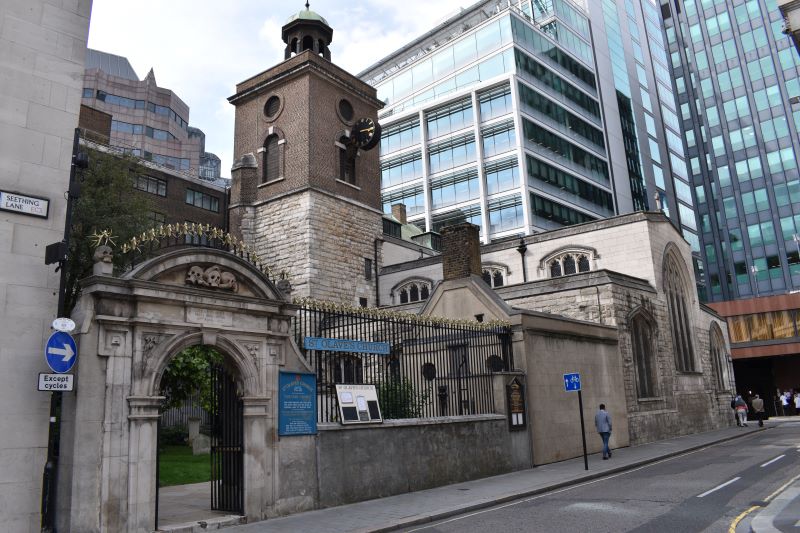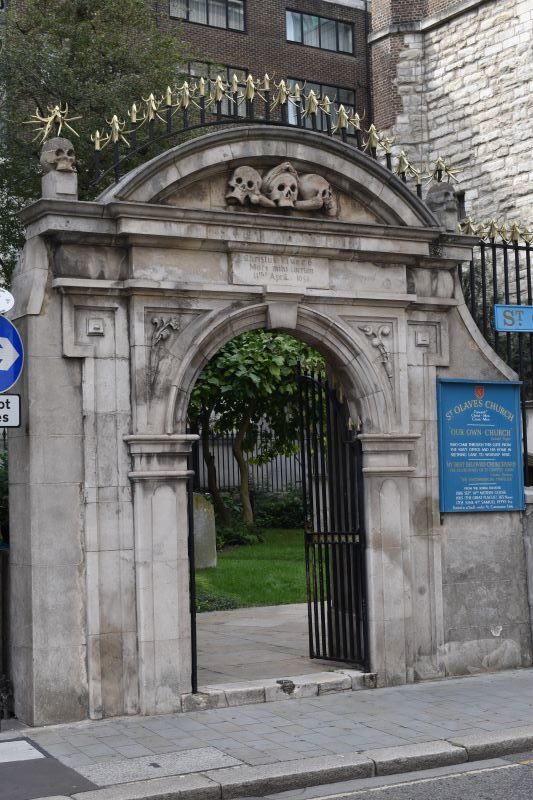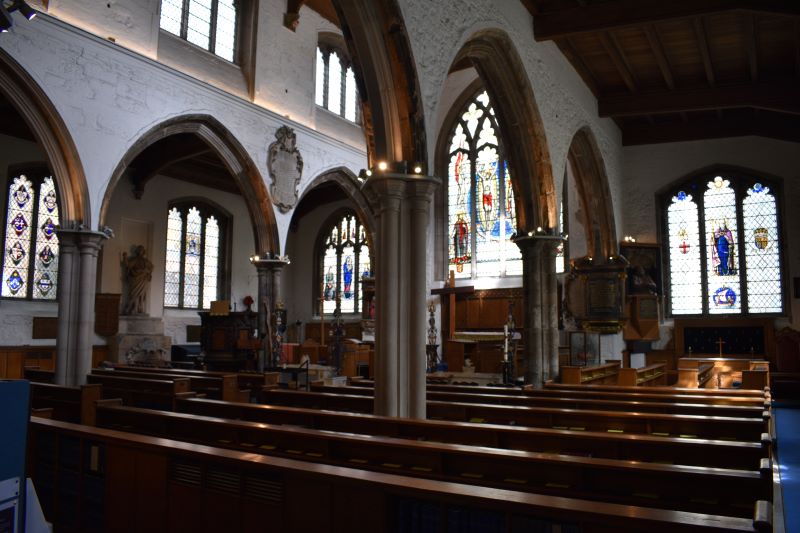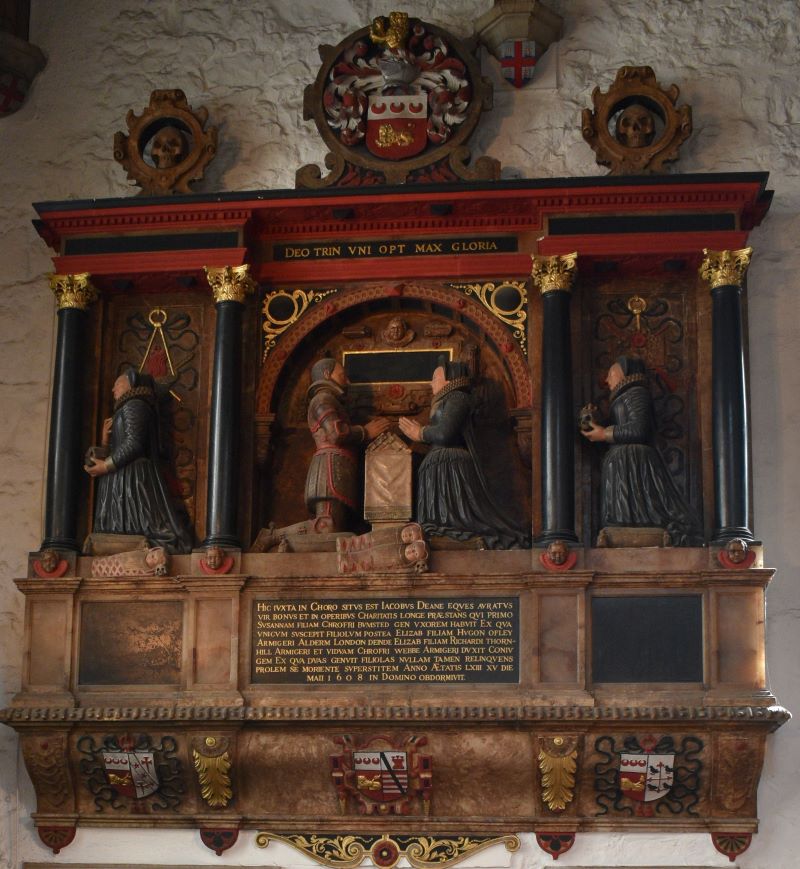Olav (later styled “Olaf”) was the King of Norway who supported the Anglo-Saxon King Ethelred who reclaimed his throne from the Danish King Cnute at the Battle of London Bridge in 1014. Olav was cannonized following his death in 1030, and a wooden church on Hart Street was erected circa 1050. Likely on or near the site of the 1014 battle, the church was given the nam “St Olave’s”. Rebuilt in the medieval period out of stone, it remains one of the few pre-London fire sites that survives to this day.
Getting There
Location: 8 Hart Street, London EC3R 7A –
Just a stone’s throw from the Tower of London this is a great site to visit while you’re in the area.
Transport: Tower Hill Tube Stop or Fenchurch Street Rail Station
Highlights
Must-See:
- Grim entryway off Seething Lane
- 17th century interior memorials
- 15th century crypt
Stone and Brick
While the church did survive the Great Fire of 1666, it was heavily damaged in the air raids of WWII. As a result, the site you visit today is a combination of medieval stone and modern materials. But don’t let that detract from your visit. There is still plenty to see!
In the 13th century, the original wooden church was replaced with a stone structure which was itself rebuilt in 1450. The crypt dates from this period.

I like that the repairs made following the bomb damage doesn’t try to match the medieval construction. The church has had a long history, and that story is told through the variation in building materials you see at the site.
The entrance to the churchyard is graced with a gate added in 1658 which reminds those who enter that “Christus vivere” – Christ Lives and that “More mihi lucrum” – Death is My Gain.


It was this somber scene that led Charles Dickens to dub the church “St Ghastly Grim” in his collection of essays titled “The Uncommercial Traveller”. A bit of foreshadowing, perhaps, with what was soon to come.
Plague and Fire
The 1660’s were a rough time for London. The Black Death ravaged the city in 1665, the worst outbreak since the massive plague in 1348. More than 350 victims are buried in the Olave graveyard. An estimated 15% of the city died during the outbreak.
Yet even with this disaster, the city remained overcrowded and congested. Many of the buildings in London were still made from wood and very close together. On the night of September 2, 1666, the King’s Baker went to bed without fully extinguishing his oven’s fire.
Sparks from the fire ignited sacks of flour which quickly grew into the massive Great Fire of London. It took three days for the city to get the fire under control. St Olave’s was spared through a combination of fire breaks created by destroying wooden buildings nearby and a change in wind direction away from the church.
Samuel Pepys, Peter Turner and ... James Dean?!
Perhaps the most famous parishioner is Samuel Pepys, a naval administrator who kept a diary for nearly a decade, giving us a fantastic first-hand account of the plague, the fire and general life in Reformation England.
Pepys left us more than a million words from 1660 to 1669 when his eyesight began to fail him.
There’s a cool website of Pepys’ diary where you can read entries and learn a lot more about London in this period.



Connection to the Boston Tea Party
I didn’t learn this until after my visit, but there is a memorial to two parishioners who were grocers on nearby Fenchurch Street. If you visit, check the tower for the memorials to Monkhouse Davison and Abraham Newman. Their crates of tea were famously dumped into Boston Harbor by the rowdy American colonists in 1773!
Post Sources:
[bg_collapse view=”link” color=”#4a4949″ icon=”arrow” expand_text=”Show More” collapse_text=”Show Less” ]
[/bg_collapse]

